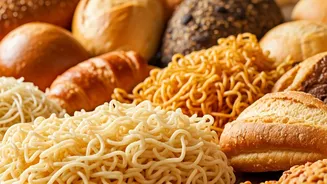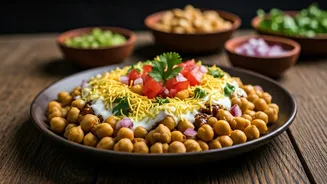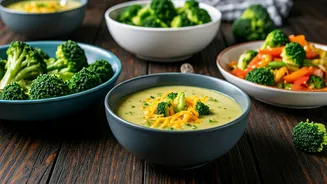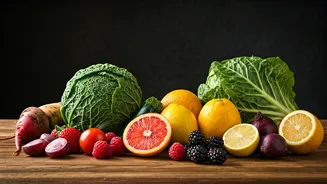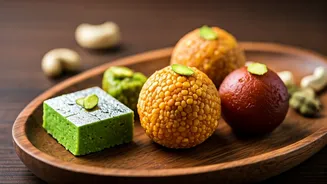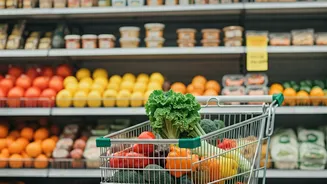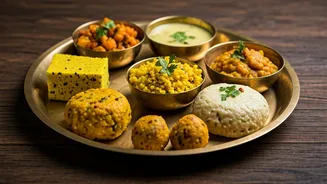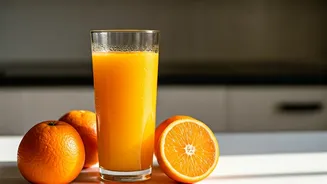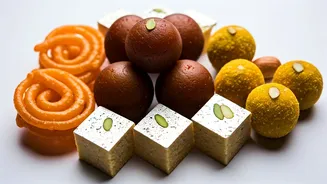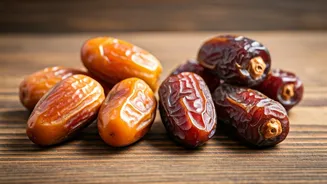The Unseen Ingredient
Maida, or refined wheat flour, is a staple in many Indian dishes, often used for its fine texture and versatility. It's a highly processed ingredient that
lacks fiber, vitamins, and minerals compared to whole wheat flour. Often, we aren't aware of its presence in many everyday foods. This article sheds light on common food items where maida makes a stealthy appearance, prompting readers to consider how maida fits into their daily diets. Becoming aware is a crucial step in adopting healthier eating habits, empowering individuals to choose foods aligned with their health goals. Many individuals are unaware of maida's implications and how it impacts overall well-being. Understanding the sources helps make informed decisions.
Packaged Snacks Revealed
A wide array of packaged snacks, frequently enjoyed for their convenience and flavor, often rely on maida as a primary ingredient. Items like chips, cookies, and namkeen mixes commonly contain maida to achieve the desired texture and shelf life. The allure of these snacks is undeniable, with marketing focusing on taste and accessibility. However, the frequent consumption of maida-laden snacks can add up quickly, displacing more nutritious foods. Being aware of these hidden sources of maida is the first step in making informed choices, enabling individuals to enjoy treats in moderation and explore healthier alternatives. The next time you reach for a snack, read the ingredient list to verify the amount of maida.
Breakfast Staples Decoded
Many breakfast items that seem convenient and tasty actually contain maida. Bread, for instance, particularly white bread, is usually made with maida. Similarly, certain breakfast cereals and instant noodles are often formulated with maida to provide texture. The quick preparation and appealing taste make these items popular choices, yet their high maida content can diminish their nutritional value. For those prioritizing a nutritious start to the day, it’s crucial to evaluate the ingredients of breakfast staples. Choosing whole-grain alternatives or home-cooked meals allows for a better nutritional profile, setting a healthier precedent for the day. Making small adjustments in the morning routine can result in considerable benefits in the long term.
Bakery Delights Demystified
Bakery goods, including pastries, cakes, and biscuits, are often rich in maida. These delicious treats depend on maida to create light, fluffy textures and appealing forms. The enticing aroma and taste of these baked goods make them hard to resist. However, the high maida content, along with added sugars and fats, contributes to their generally low nutritional value. People interested in a balanced diet may wish to make a trade-off. Conscious consumers often choose whole-grain options or baked goods with less maida, which can be a great way to enjoy treats responsibly. A home-baked treat allows the consumer to know exactly what is being consumed.
Street Food's Maida Secret
Street food, a staple in Indian culinary culture, often incorporates maida in its preparation. Items like samosas, kachoris, and various fried snacks rely heavily on maida for their crispy exteriors. These foods are immensely popular for their quick availability and diverse flavors, making them go-to choices for casual meals. Regularly consuming maida-rich street foods can influence nutritional intake, with many of these items being high in calories and unhealthy fats. Mindful eating allows you to enjoy these treats in moderation. Considering healthier alternatives like whole-wheat options can balance the diet.
Gravies and Sauces
Maida is often used as a thickening agent in gravies, sauces, and creamy preparations to give them body and consistency. Many restaurant-style gravies and sauces use maida to thicken quickly and smoothly. Its ability to bind ingredients and provide a velvety texture makes it a favored choice. Nevertheless, the excessive use of maida can lead to a higher intake of refined carbohydrates. If you are health conscious, you may consider alternatives such as cornstarch or whole-wheat flour. Home cooking helps keep a check on ingredients and their quantities. By making informed choices, you can manage the maida content of your meals without sacrificing flavor.
The Importance of Labels
Reading food labels carefully is key to identifying the presence of maida in food items. Ingredient lists often reveal the use of maida, sometimes listed as 'refined wheat flour'. Checking labels helps consumers make informed decisions about their food choices and supports them in managing their daily maida intake. Become accustomed to looking at ingredient lists before purchasing any packaged food items. Be aware of the role of maida in the foods you consume and the amount you consume. Consumers equipped with this knowledge can make healthier choices. This simple practice can significantly influence your overall health and well-being.
